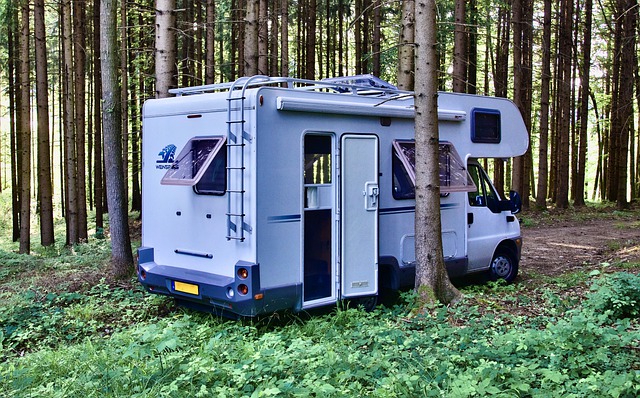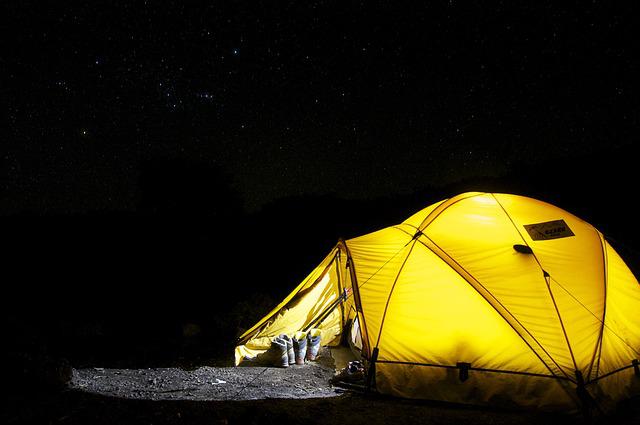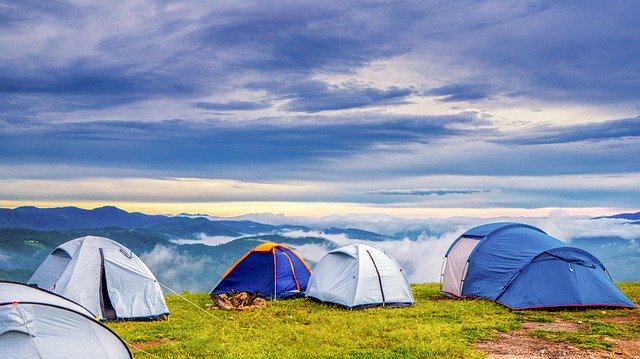
There are important things you should remember when camping in national park. Safety is the number one concern. The number one concern is safety. Bears and other large predators are a real threat. You can purchase bear-resistant food storage boxes to keep in your car or trunk. You should also keep these containers at least 15ft above the ground.
There are rules for camping in national parks. Yellowstone is an example of a national park where you need to treat your dogs with respect. Don't let your dog run free and don't allow them to pose a threat or danger to wildlife. You should also make sure your dog is well-behaved to avoid any unwanted attention. And, you should practice the concept of "leave no trace": leave campsites as you found them.

Check to see if reservations can be made before you visit a national park campground. Some national parks offer online reservations while others are not. Always make sure to book reservations in advance. If you do not have one, you may be turned away. A good idea is to make reservations well ahead of time to avoid problems with the first-come, first-served system. Book at least one year in advance to ensure a smooth trip.
A campground should have amenities. There may be a designated campground in the park, or you could camp in an undeveloped area. However, dispersed camping in a national park can be difficult. In addition, national parks usually have more rules than other campgrounds. This is why it is important to read the regulations before you put up your tent.
During your visit, consider whether you want to camp in a front-country campground or in a back-country park. Some national parks are not accessible by cars, so you'll need to drive for a few hours to reach them. It is also up to you to decide if you prefer a campground closer to a park toilet or one with less crowds. A campground near a restroom is usually more private, while one located far from one is more likely to have more privacy.

Other things to consider when choosing campgrounds are their amenities. Some parks provide electricity while others do not. The best national parks often have toilets, so make sure you select one that suits your needs. Apart from its convenience, camping in national parks is a great way for your family to spend quality times together. The best part is that national parks often have many other amenities, making it easier for you to travel.
FAQ
Can I take my dog with?
Most states ban dogs from being hunted alongside humans. However, some states have laws allowing this practice. This practice is not allowed in all states.
Some hunters bring their pets with them. Some hunters feel that having a pet can help them relax while they hunt. Others believe that a companion helps them avoid getting lost.
However, pets can be a problem. Dogs are known to chase other animals away from their owners. Also, wild animals may attack the pet.
What gun is best to hunt?
A.22 caliber rifle is the best weapon for hunting. Because it's lightweight and easy-to-carry, this rifle is the best choice for hunting. It is also able to shoot accurately from long distances.
The best time to use this type of firearm is when you are not expecting an attack from a predator.
You don’t want to waste ammunition shooting at trees, because it would do little harm. You should aim your gun at your prey.
A rifle with a.30 calibre can be used for hunting larger game such deer and elk. It is heavier than the.22 Caliber rifle.
To achieve the same accuracy with a rifle of 30-caliber calibre, you will need to practice more.
How many people in the US rely on hunting?
Over 300 million hunters reside in the United States. This means that hunters are twice as numerous as those who live in New York City.
Hunting has been a popular American pastime for centuries. But today, fewer Americans hunt for sport than ever before. According to the U.S. The U.S. Fish & Wildlife Service reports that only 2 percent shoot regularly. This number is even lower for young adults.
While hunting may seem like something that is long gone, it is still popular among the older generation. According to a recent survey, 68 percent of boomers intend to hunt again after they retire. Hunting is an opportunity to reconnect with nature and experience the outdoors.
Younger generations may not consider hunting a priority. According to National Shooting Sports Foundation, 18% of millennials don't consider themselves to be avid shooters.
FWS is committed to ensuring that America's wild areas remain accessible for all.
The agency's "Wild Lands” campaign was launched in 2014 to increase awareness about public lands throughout the country. The goal is to educate people about the importance of preserving these areas and encourage them to visit them.
The Wild Lands initiative encourages conservation efforts. FWS and National Rifle Association collaborated to create Project Gunter a youth shooters program. This program teaches kids how to safely handle firearms and helps them develop skills such as marksmanship and safety.
Project Gunter is now expanding to include women and minorities. Project Gunter is now expanding to include women and minorities.
Can I hunt with or without a license?
Yes, hunting is legal without a license. This is a violation of the law.
This could lead to jail time and fines.
Some states allow residents without a license to hunt. Check with your state department of natural resources to see if you are allowed to hunt without a license in your area.
Is hunting dangerous?
Yes, but it is possible to be injured during hunting.
There are many ways that you can injure someone else.
Improper shooting techniques are one way. An example of this is when you shoot at an incorrect angle or hit the wrong area of the animal.
Another possibility is to be attacked by another pet.
Hunting accidents happen every year. Guns cause many deaths and serious injuries.
Hunters are advised to keep their guns loaded until they reach their destination.
They should also make sure their guns are not loaded when they go into the woods.
Always keep your eyes peeled. Listen for the sounds and be attentive to your surroundings.
You must be able to defend yourself against any animal that you approach.
Never chase after prey. Instead, be patient and wait for prey to arrive.
Never make a mistake. They can lead to injury or death.
Avoid cliffs or other areas where you can't see the bottom.
Avoid rivers and streams. These places may flood unexpectedly.
While hunting, avoid drinking alcohol. You can slow down your reaction time and affect your judgement.
Keep all safety equipment close at hand. Always have a flashlight, first aid kit, and flashlight with you.
It is important to know how to treat an emergency. If you do not know how to perform CPR or administer first aid, find someone who knows how to help you.
Why is it that only 1% of hunters kill deer annually, according to the U.S. Department of Agriculture.
USDA estimates that about 6 million Americans hunt deer. Only 2.2 million shoot one.
This means that only 0.6 percent kill deer each year.
Which state is home to the most deer hunters in America?
Wyoming is the state with the highest number of deer hunters. It also sells most hunting licenses annually.
South Dakota is home to the second-most deer hunter state. It ranks third for the number of hunting licenses sold each year.
The state with the fewest deer hunters is New Hampshire. It is the least populous state in terms of hunting licenses per capita.
Statistics
- Less than 1% of Hawaii's population has a hunting license. (stacker.com)
- Over the past 50 years, the number of hunting licenses in California has been on a rapid decline, falling 70% from more than 760,000 in the 1970s to under 268,000 in 2020—even as the state's population has skyrocketed, according to The Mercury News. (stacker.com)
- Licenses dropped from a peak of roughly 17 million in the 1980s to 15 million in 2019, according to The Seattle Times. (stacker.com)
- - Percent of residents with paid hunting licenses: 0.7%- (stacker.com)
External Links
How To
How to hunt wild Hogs
Wild hogs, which are large, can be found in North America and Asia as well as Europe. Wild hogs feed on vegetation and small animals such a rabbits or mice, birds, insects, and fish. They usually feed at night. After six months of gestation, one piglet is born. Every two years, a sow will give birth to a piglet. Although wild hogs are usually solitary, they can sometimes live in groups called herds.
Wild boars typically weigh around 200 pounds (90kg). Their average head length is 10-12 inches (25-30cm), and their body length is 20-30 inches (50-75cm). Wild pigs are long-legged, have broad shoulders and short tails. A thick layer of fat is found under their skin.
They have a very strong sense of smell, hearing, and sight. These senses allow them to spot danger and locate food. They can run up 35 miles per hour (56 km/h), as well as jump up to 15ft (4m) distances. They have sharp teeth. They are aggressive when defending themselves against predators.
Hunting wild hogs is difficult due to their intelligence, speed, and elusive nature. They must be carefully tracked by hunters. If hunters shoot too early, the animal may escape. The animal could die if hunters attempt to shoot it too soon.
Wild hogs can be killed using many hunting methods. Shooting is the most popular method. This involves hunting the animal down and waiting for it to come within range. Another method is trapping. Trapping is the practice of placing traps in areas where the hogs are likely to drink. Traps often include a scent lure like corn meal mixed with peanut butter. When the trap is sprung, the hunter shoots the trapped pig.
Snaring is another method. Snaring uses a noose made out of rope to catch the pig. The best time to catch a pig is during mating season.
Other methods include poisoning, spearing and netting. To stop the pig from breathing, netting or spearing is a method of placing a net on its neck. Poisoning is when the poison is injected into the pig's throat.
Wild hog hunters must be prepared to deal with the cold. To stay warm in some areas, hunters can wear snowshoes. Hunting dogs may be used to track animals.